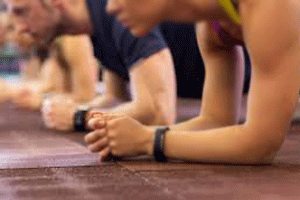- Home
- Editorial
- News
- Practice Guidelines
- Anesthesiology Guidelines
- Cancer Guidelines
- Cardiac Sciences Guidelines
- Critical Care Guidelines
- Dentistry Guidelines
- Dermatology Guidelines
- Diabetes and Endo Guidelines
- Diagnostics Guidelines
- ENT Guidelines
- Featured Practice Guidelines
- Gastroenterology Guidelines
- Geriatrics Guidelines
- Medicine Guidelines
- Nephrology Guidelines
- Neurosciences Guidelines
- Obs and Gynae Guidelines
- Ophthalmology Guidelines
- Orthopaedics Guidelines
- Paediatrics Guidelines
- Psychiatry Guidelines
- Pulmonology Guidelines
- Radiology Guidelines
- Surgery Guidelines
- Urology Guidelines
Vigorous exercise can lead to low blood sugar in teenagers with type 1 diabetes

Louisville, Kentucky: Vigorous-intensity physical activity or exercise in adolescent athletes with type 1 diabetes increases the risk of prolonged nocturnal hypoglycemia (low blood sugar levels at night), according to a recent study published in the journal Diabetes Technology & Therapeutics.
Understanding the response of the body to physical activity with respect to the variation of blood sugar levels could help in effective tackling of nocturnal hypoglycemia for the management of type 1 diabetes.
Jason R. Jaggers, University of Louisville, Norton Children's Hospital, Louisville, Kentucky, and colleagues examined the acute temporal association between blood sugar and measures of moderate to vigorous physical activity (MVPA) through an accelerometer.
The study included 10 athletes aged 13 to 17 years with type 1 diabetes. Physical activity was measured by accelerometer and continuous glucose monitor (CGM). Physical activity was analyzed according to intensity indicating time spent in light, moderate, and vigorous intensities.
Hypoglycemic episodes were defined as two successive CGM readings <70 mg/dL, at 5-min intervals, with an episode ending with at least two CGM readings >70 mg/dL.
The researchers found that:
- Incidence of nocturnal hypoglycemia occurred during 29% of the nights measured with an average duration of 52.33 ± 41.04 min.
- When combining total minutes of moderate and vigorous intensities a significant difference was observed between combined MVPA and number of nocturnal hypoglycemic episodes (62.92 min vs. 49 episodes).
- Moderate intensity activity alone was not significant in predicting hypoglycemic events or duration.
- Vigorous-intensity physical activity was a significant predictor of nocturnal hypoglycemia after controlling for sedentary and light intensity minutes, age, and gender with an average time of 26 min of vigorous-intensity.
Also Read: Low blood sugar episodes may lead to amputation in diabetic foot patients
Based on the results, the authors concluded that incorporation of accelerometers into patient care could prove beneficial when making further recommendations for athletes.

Disclaimer: This site is primarily intended for healthcare professionals. Any content/information on this website does not replace the advice of medical and/or health professionals and should not be construed as medical/diagnostic advice/endorsement or prescription. Use of this site is subject to our terms of use, privacy policy, advertisement policy. © 2020 Minerva Medical Treatment Pvt Ltd